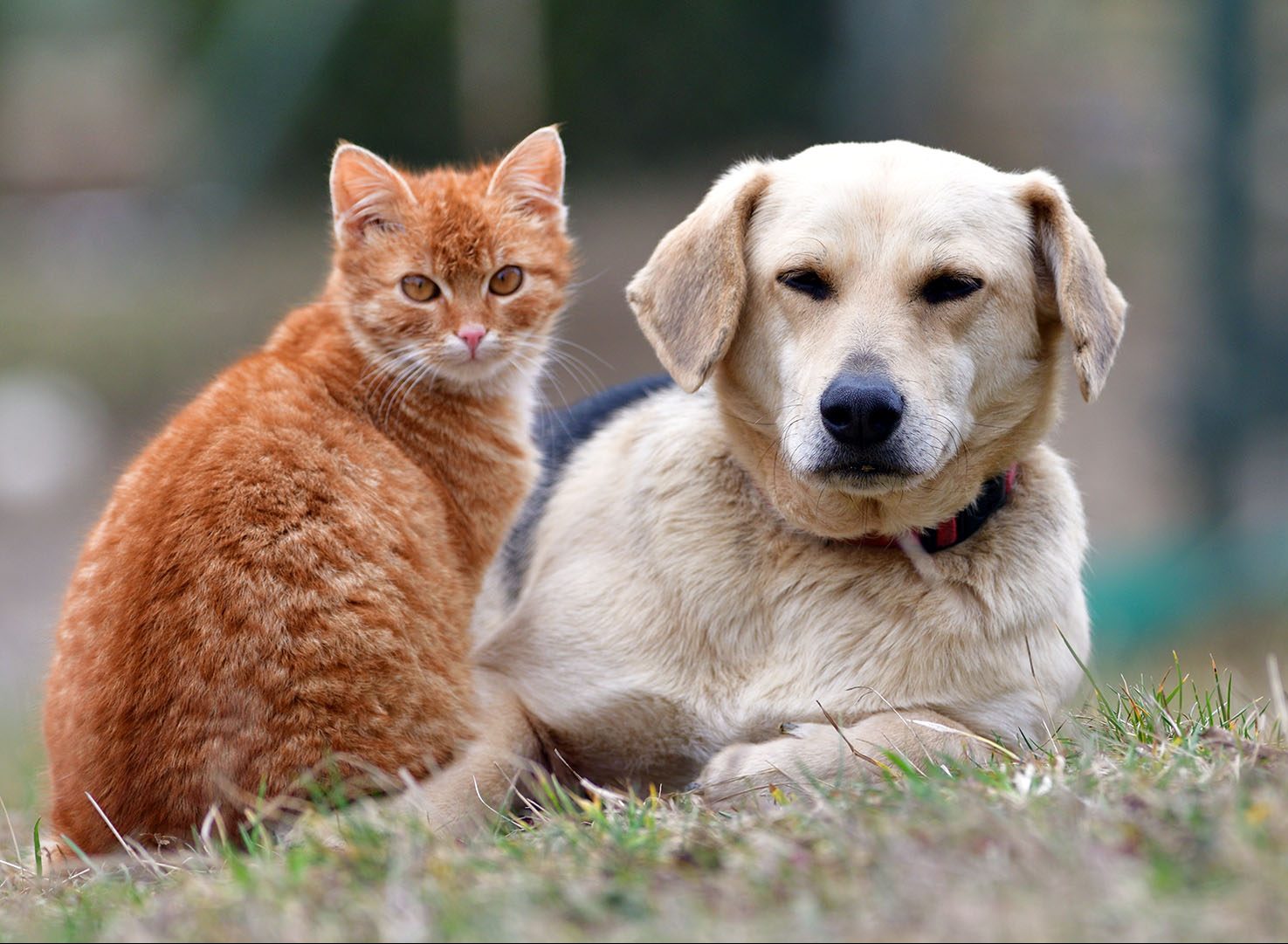
Pet Abduction Bill Becomes Law in England and Northern Ireland
By Nicole Pallotta, PhD, Senior Policy Program Manager
Contents
Summary
Summary: England and Northern Ireland’s Pet Abduction Act 2024 makes it a crime to abduct a companion animal. Previously covered under the Theft Act 1968 as a property crime, the new offense of “pet abduction” recognizes the emotional impact of abduction on the animal herself— not just the distress experienced by their guardian. Grounded in the UK’s recognition of animal sentience in 2022, the new law makes it clear that animals have a special legal status beyond mere property. The Pet Abduction Act is an important advance as it contributes to the de-objectification of animals under the law by recognizing them as legal subjects and crime victims.
Effective August 2024, new legislation has created a specific offense of dog and cat abduction in England and Northern Ireland. The unlawful taking of a companion animal was previously covered under the Theft Act 1968 as a property crime. In contrast, the Pet Abduction Act 2024 makes it clear that animals have a special legal status beyond mere property.
Underlining this special status, the new law “recognizes that cats and dogs are not inanimate objects but sentient beings capable of experiencing distress and other emotional trauma when they are stolen from their owners or keepers.” 1
The legislation was among the policy recommendations issued in 2021 by the Pet Theft Taskforce, which was created by the UK government in response to concerns about an increase in dog theft during the pandemic. 2 Penalties for violating the Pet Abduction Act include up to five years in prison, a fine, or both. 3
Legal Recognition of Animal Sentience
Importantly from a policy perspective, the UK codified legal recognition of animal sentience in 2022 with the Animal Welfare (Sentience) Act. 4 This Act went beyond similar legislation in other countries by also establishing an Animal Sentience Committee tasked with evaluating how “government policy decisions take account of animal welfare.”
Demonstrating that animal sentience legislation can lead to concrete change, the Pet Theft Task Force cited this law as a reason for creating a separate offense for cat and dog abduction, versus simply expanding existing theft law.
The Taskforce did consider whether expanding the Theft Act to create a new “pet theft” offense would be appropriate. But it concluded this would be an inadequate solution because the framework provided by theft law does not take into account the well-being of the stolen animal and thus would still treat her only as property. According to the report:
Reflecting this legal recognition of sentience, the Taskforce has considered ways to better reflect the view that stolen pets are not mere property but sentient beings, and considered a number of criminal law and sentencing interventions. The Taskforce does not believe that the creation of a new pet theft offence or a statutory aggravating factor . . . would have the desired impact. This is because theft deals with the deprivation of property, and so the welfare of the stolen animal would not be a primary consideration when sentencing. However, a new ‘pet abduction’ offence could switch the focus from the loss to the owner to the welfare of the animal.

Animals as Legal Subjects
This shift in focus — from the owner’s loss to the animal’s well-being — exemplifies an overarching goal of efforts to advance the law for animals: recognition that animals are legal subjects not objects, and “someone” not “something” under the law. Applying an animal-forward lens to legislation brings animals’ experiences into focus alongside that of human legal owners as a factor to be considered, which under theft law were incognizable and essentially invisible.
This framing is important from the vantage point of the expressive function of law — which deals not in punishment but in creating and supporting social norms — because it reflects that animals’ subjective experience matters. 5 More practically, it also implies a new legal right for companion animals: the right not to be abducted. 6
Abduction Versus Theft: What’s in a Name?
Naming the crime “abduction” rather than “theft” emphasizes that while companion animals are legal property, they are also sentient beings who are qualitatively different from inanimate objects, which account for most other property crimes.
The plain definition of abduction versus theft highlights the ambiguous status of animals under the law as sentient beings who are also legal property. The Cambridge Dictionary defines “theft” as the “crime of stealing something” while abduction” means “to force someone to go somewhere with you” [emphasis added]. This is an important language shift as it emphasizes animals’ sentience over their property status.
Codification of their status as “someone” and not “something” is fundamental to advancing the law for animals. Animals are not objects and the language used in our laws should reflect this fact. Indeed, this was described as a primary motivator to create a new law. As bill author MP Anna Firth wrote: “The Bill is important because it removes pets from being in the same legal category as inanimate objects that have been stolen.”
Animal Sentience and De-objectification
A legislative consent memorandum endorsing the Pet Abduction Bill’s extension to Northern Ireland included recognition of animal sentience in sentencing among the policy objectives:
Courts would therefore have more freedom to consider the total level of harm to the owner and animal by treating them as a sentient being and therefore sentencing would not just be based on the monetary loss, which for an individual pet may not be significant.
Underlying the creation of a “pet abduction” offense separate from theft law is the tacit recognition that legal remedies crafted for crimes involving inanimate objects are not appropriate for crimes against animals. Legal remedies that consider the harm experienced by the animal — as a sentient being and crime victim — and not just their perceived economic value help correct a persistent shortcoming in animal law: objectification of animals.

An outdated feature of many laws pertaining to companion animals is that their human guardians are frequently the subject of the law (as property owner) — and the party with legal standing — rather than the animal herself (as owned property) 7 While property status does not itself preclude recognition of expanded legal rights for animals, access to justice is elusive when animals are categorized alongside inanimate property without regard for their status as sentient beings. 8
Animal protection laws that clearly recognize animals as subjects of the law — even if alongside their human guardians — are crucial to advancing their interests through the legal system.
Progress in de-objectification can occur even while animals are still legally defined as property. Discussing Kuhn’s observations about scientific revolutions and paradigm shifts, Lerner (2022) writes:
Applying this criterion to the legal status of animals . . . as de-objectification does not abolish the proprietary relationship, there is no paradigm shift. De-objectification could be better described as an evolution that both consolidates existing advances in the treatment of animals and serves as a platform for future developments.” (283)
As Lerner suggests, de-objectification can be considered a midway point between the law treating animals as inanimate objects or things and recognizing them as “subjects of rights” 9 or legal persons. While not the end point, de-objectification of animals in the law is a positive development in whatever context it occurs: 10
Removing animals from the realm of moveable property and inanimate objects improves their status and can reduce cruelty cases even if there is no immediate, significant change in their condition. . . . Animal de-objectification is another step in the long road to improving animals’ lives . . . . and the internalization of this idea by the public could enable future steps toward animal rights. As such it is not the end but another brick in the complex structure of human/non-human animal relationships.” (p. 302) 11
Is Animal Sentience Legislation Symbolic (and Does it Matter)?
The efficacy of legal recognition of animal sentience, and how much of a focus it should be for advocates working to strengthen animal protection laws, is a subject of debate. 12 Concerns include that these laws can be a type of humane washing at worst or purely symbolic at best. 13 However, even purely symbolic laws can serve an expressive function that can help shift social norms, which in turn can bolster support for stronger animal protection laws.
On the positive potential of symbolic legislation, Rodriguez Ferrere (2022) writes:
Acknowledging animal sentience may not seem like much, because it is simply recognizing a scientific fact. However, that does not prevent it from acting as a powerful signal . . . such that this acknowledgement may possess real power. There are positive aspects to symbolic legislation. The use of symbolism can prompt new conversations within the community or provide new vocabulary to advance existing conversations. It can set benchmarks to which other jurisdictions should aspire. Even if drafters cynically intended sentience to be an impotent term, it is possible to look past that symbolism and imbue it with substantive power. The question is whether these potential positive effects outweigh their negative counterparts. (p. 143)
Also, not all sentience laws are created equal. Beyond simply stating that animals are sentient, having a policy statement attached to that recognition — i.e., what does it mean that animals are sentient? — makes them potentially more effective. 14
On the negative side, Rodriguez Ferrere (2022) notes that the EU’s recognition of animal sentience in 1997 created a model “notable for its vagueness” which has since been adopted by other states, in essence setting a low bar that other governments have not been compelled to rise above:
While the protocol was an advance in animal welfare legislation at the time, its brevity and abstraction does little to guarantee clear and concrete advances in animal welfare . . . . It is no coincidence that, like the EU, other states have failed to define sentience, contextualize the term or provide a clear indication of the impact that its recognition should have. Since the EU did not go this far, there was no incentive for other states to go further. Symbolism, it seems, begets symbolism, making the EU’s recognition of sentience less a model to follow, and more of an original sin. (p. 141)
A positive feature of the UK sentience legislation is arguably that it is not purely symbolic, in part because it mandated creation of a committee to carry out functions associated with the law. It remains to be seen how effective this committee will be in ensuring animal sentience is meaningfully taken into account in the crafting of new laws and policies. But the new Pet Abduction Act can be traced in part back to the recently enacted sentience law, bolstering support for the potential positive impact of codifying animal sentience, and suggesting that future reforms based on this recognition are possible.
Conclusion
Language is important and can help shift social norms. Beyond the symbolic or expressive aspect of calling the new offense “abduction” versus “theft,” the Pet Abduction Act substantively recognizes the emotional impact of abduction on the animal herself — not just the distress experienced by their guardian — implicitly recognizing the animal as a crime victim. This law also shows how meaningful reform can emerge from legal recognition of animal sentience.

Further Reading & Listening
- “Does Sentience Legislation Help Animals?” olicy review and review Animal Ask. December 9, 2022.
- “Pet Theft Taskforce Report.” Policy paper issued by the UK Department for Environment, Food & Rural Affairs; Home Office; and Ministry of Justice. September 3, 2021.
- Pallotta, Nicole and David B. Rosengard, hosts. “Animals Are Not Things.” Animal Amicus [podcast]. Animal Legal Defense Fund. November 15, 2023.
- B. Rodriguez Ferrere. 2022. “The (Symbolic) Legislative Recognition of Animal Sentience.” Animal Law Review. Vol 28, Issue 1.
- Lerner, Pablo. 2022. “Animals Are not Objects but Are not Yet Subjects: Developments in the Proprietary Status of Animals.” Animal and Natural Resource Law Review. Vol. 18. Michigan State University.“Critical Caselaw: Judicial Recognition of Animal Sentience.” Animal Legal Defense Fund webinar. September 17, 2020.
- Dunn, Lora and David B. Rosengard. 2017. “A Dog is Not a Stereo: The Role of Animal Sentience in Determining the Scope of Owner Privacy Interests Under Oregon Law.” Animal Law Review. Vol 23, Issue 2.
References
- See: https://www.gov.uk/government/news/pet-abduction-bill-becomes-law
- According to the Pet Theft Taskforce Report, an estimated 2,000 incidents of dog theft were reported in England and Wales alone in 2020. While an uptick in stolen animals was perceived by members of the public and advocacy groups, the report notes: “A key conclusion from the taskforce is that reliable data on pet theft is limited. It is essential to address these data gaps as enhanced transparency is fundamental to supporting the police and the courts in dealing with this serious issue.”
- Penalties under the Theft Act were similar, but advocates noted that because sentencing was based on the monetary value of the stolen good, penalties were minimal and did not reflect the seriousness of the crime, nor act as a deterrent. There is also hope that creating a separate offense will lead to greater enforcement and prioritization. See: “Pet abduction to be made new criminal offence in England” (BBC, Sept. 3, 2021). “Although offences under the Theft Act 1968 carry a maximum term of seven years, ministers say there is little evidence of that being used, because the severity of the sentence is partly determined by the monetary value of the item taken.” See also: “Petition: Reclassify the theft of a pet to a specific crime in its own right.”
- Animal sentience was recognized in the UK when it was still part of the EU (via Article 13 of the Lisbon Treaty). However, upon Brexit in 2020 animal sentience disappeared from UK law. See: “Animal Sentience and Brexit.”
- The expressive or symbolic function of law — in contrast to its substantive function of providing rights, duties, obligations, and sanctions — serves to communicate and legitimize collective values and norms, which in turn influence behavior. Some research has shown that even laws without sanctions or which are unenforced can influence behavior (see: Funk, Patricia. 2007. “Is There An Expressive Function of Law? An Empirical Analysis of Voting Laws with Symbolic Fines. American Law and Economics Review. Vol. 9, Issue 1. Pp. 135–159, Goodman, Ryan. 2001. “Beyond the Enforcement Principle: Sodomy Laws, Social Norms, and Social Panoptics.” California Law Review. Vol. 89, No. 3. P. 634-740).
- Prior to this, it was a crime against an owner to take their animal without permission per the Theft Act. Here, the owner continues to have a right (not to have their animal abducted) and the animal also has a right (not to be abducted).
- A notable exception is animal cruelty law, which generally treats both guardians and the animals themselves as having an interest in the animal not being subject to criminal maltreatment.
- For some ways U.S. law recognizes that animals are more than property, see: “How Animals Differ from Other Types of ‘Property’ Under the Law.”
- “Subject of rights” is often used as a synonym for “legal person” by judges in Latin America. See, e.g.: “Argentine Court Declares Cougar a ‘Subject of Rights’” (Animal Law Update). For a discussion of four traditional conceptions of legal personhood, including “subject of rights,” arguing that animals can be considered persons according to each, see: Montes Franceschini, Macarena. 2022. “Traditional Conceptions of the Legal Person and Nonhuman Animals.” Animals 12, no. 19: 2590.
- Another context in which de-objectification is making strides is animal custody law, which ensures animals are treated differently from inanimate marital property to be divided in cases of divorce. See: “Alaska Legislature Becomes First to Require Consideration of Animals’ Interests in Custody Cases.” (Animal Law Update). It is worth noting that both this example and the Pet Abduction Act apply only to animals defined as companions (although the latter explicitly allows for the potential expansion of the category “companion animal” in the future). As they have a social status increasingly akin to family members, it is perhaps unsurprising companion animals would be the “gateway” species to legal de-objectification. However, one hopes strides here will lead to changes for other categories of animals in the future.
- Lerner, Pablo. 2022. “Animals Are not Objects but Are not Yet Subjects: Developments in the Proprietary Status of Animals.” Animal and Natural Resource Law Review. Vol. 18. Michigan State University.
- Rowan, et al. (2021) conclude: “So far, however, there has been little evidence that the various declarations that animals are sentient in other countries and regions have had much direct impact on animal protection legislation or on how animals are actually being treated. Nevertheless, it is very unlikely that incorporating animal sentience language in legislation would be harmful to the interests of animals in any way.” (Rowan, Andrew N; D’Silva, Joyce M; Duncan, Ian J.H.; and Palmer, Nicholas. 2021. “Animal sentience: history, science, and politics.” Animal Sentience 31(1)). Commenting on the previous article, see: Kotzmann, Jane. 2022. “Legal recognition of animal sentience: the case for cautious optimism.” Animal Sentience 31(7). For a detailed analysis of the issue, including a theory of change, literature review, and case studies, see: “Does Sentience Legislation Help Animals?” Animal Ask. December 9, 2022.
- See Rodriguez Ferrere (2022) for a robust discussion of both the positive and negative potential of symbolic legislation, concluding that animal sentience legislation is chiefly symbolic and not benign because “the potential advantages . . . are outweighed by the risks of such legislation” (“The (Symbolic) Legislative Recognition of Animal Sentience” Animal Law Review. Vol 28, Issue 1, p. 150). For more on positive and negative conceptions of symbolic legislation generally, see van Klink (2016): “Symbolic Legislation: An Essentially Political Concept.” (in: van Klink, B., van Beers, B., Poort, L. (eds) Symbolic Legislation Theory and Developments in Biolaw. Legisprudence Library. Vol 4. Springer, Cham).
- See previous Animal Law Update, “Australian Capital Territory Enacts New Law Recognizing Animal Sentience,” for more on this issue. See also: “A Dog is Not a Stereo: The Role of Animal Sentience in Determining the Scope of Owner Privacy Interests Under Oregon Law” (Dunn, L. and Rosengard, D.B. 2017. Animal Law Review. Vol 23, Issue 2).
Sign Up!
Join the Animal Legal Defense Fund's email list to stay up to date on lawsuits, legislation, and regulations affecting animals.
Related
-
City of Sturgeon Agrees to Pay $500,000 in Settlement Over Police Shooting of Blind, Deaf Dog
The lawsuit argued the lethal force used violated the 4th amendmentNovember 14, 2025 Press Release -
California Governor Signs Animal Protection Bills into Law
The Animal Legal Defense Fund sponsored two bills protecting cats and wild animalsOctober 21, 2025 News -
Appeal Filed Over Court Decision Letting EPA Suppress Factory Farm Air Pollution Reporting
The EPA’s rule shields polluters as factory farm emissions kill more people than coal plantsOctober 14, 2025 News




